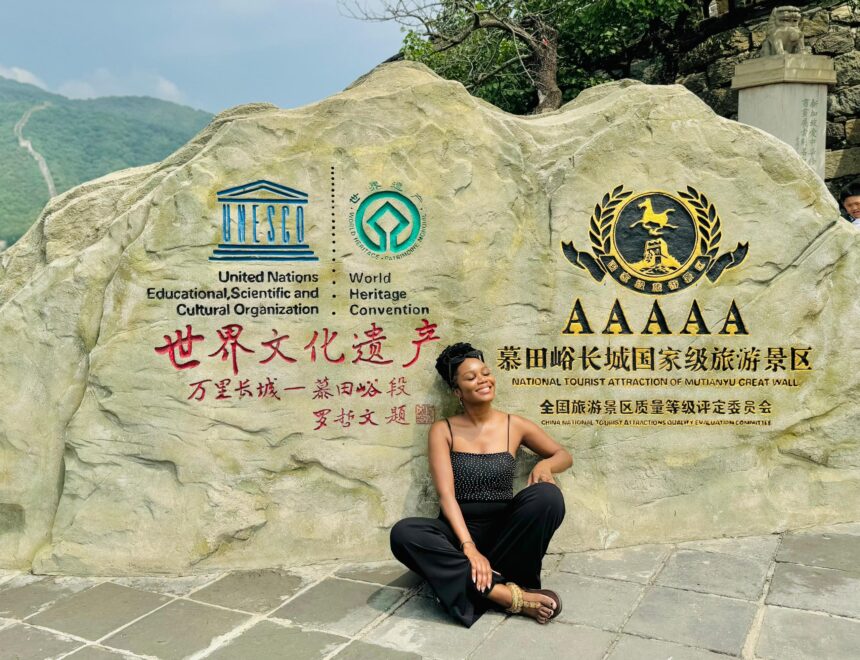Returning to China for the third time in my life, I was filled with a mix of anticipation and curiosity. My first visit in 2014 was memorable for its delicious food and rich culture.
However, my last trip was overshadowed by the chaos of Covid-19, which disrupted the experience with uncertainty.
This time, I was curious to see how China had evolved after a few years of navigating the challenges of the pandemic, and wondered how recent global disruptions had shaped its trajectory in a post-pandemic era.
Between May/June 2024, I received an unexpected invitation from the Chinese embassy in Namibia to participate in the ‘China through my camera’ programme.
This unique initiative by the China Public Diplomacy Association offered a fresh perspective on China, allowing us, as participants, to engage with international communication specialists and innovative media firms, and gain insights into the impact of artificial intelligence on media.
The programme promised us an immersive experience across China’s diverse landscapes, culinary delights and local customs.
On 1 July 2024, I found myself back in Beijing, attending the opening ceremony at the Academic Exchange Centre of the Communication University of China.
The event, graced by distinguished guests like Chen Yuming, vice president of the China Public Diplomacy Association; Yu Lei, director of the China Centre for International Press Exchange as well as Wang Hui, vice president of the Communication University of China, set an inspiring tone for our month-long exploration.
The programme brought together 30 global influencers from 25 countries, including seven African countries, all of them eager to explore and share China’s story.
During this programme of 30 days, we traversed four provinces and 16 cities, capturing the essence of China through our cameras.
This extended shoot was the longest I had ever undertaken, pushing me to elevate my photography, videography, editing and time management skills.
Each location – from the majestic Great Wall and the historical grandeur of the Forbidden City to the bustling streets of Shanghai – offered a unique narrative, blending historical legacy with modern dynamism.
Exploring historical and cultural sites deepened my appreciation for China’s rich history, and its commitment to preserving traditions. The Terra Cotta Warriors in Shaanxi, the Leshan Giant Buddha and the Longmen Grottoes showcased China’s artistic and spiritual heritage.
Watching the ‘Song Dynasty-Dongjing Dream’ performance in Henan vividly brought the Song Dynasty’s history to life, highlighting China’s ability to celebrate its past while embracing the future.
The Chinese have not only embraced their deep cultural roots but have also transformed them into captivating contemporary experiences.
The discovery of ancient sites like the Terra Cotta Warriors has been celebrated through immersive performance dramas, blending historical significance with modern artistry.
These efforts reflect a commitment to preserving and honouring their ancient civilisation while showcasing it to the world. This harmonious integration of past and present is evident in the meticulous care given to preserving the Terra Cotta Warriors, a testament to China’s dedication to maintaining its rich historical legacy.
What truly impressed me was how Chinese history is not just confined to books but comes alive through thousands of daily performances across the country – from captivating 5D films to operas.
The dedication of the Chinese people to their stories and traditions is evident everywhere. At historical sites, local families often outnumber international tourists, bringing their children to celebrate and learn about their heritage.
This commitment to passing down culture is not just a tradition but a vibrant part of daily life. It feels as though the Chinese are seamlessly weaving their history into the fabric of their present, ensuring their rich past remains a dynamic and integral part of their future.
One highlight of my trip was visiting an air taxi company that manufactures autonomous cars. These aerial and autonomous vehicles promise to ease urban traffic, providing quick and efficient travel above the crowded streets.
Similarly, smart, self-driving taxis reinforced China’s position as a global leader in technology. Witnessing autonomous vehicles navigate complex urban environments seamlessly at the BIHAD (Beijing High-level Autonomous Driving) demonstration zone was a testament to China’s leadership in cutting-edge technology.
Although our programme was in English, we used advanced artificial intelligence (AI) technology to facilitate real-time translation between Chinese and English as well as other languages.
This cutting-edge technology allowed us to follow discussions and lectures seamlessly, including sessions on aerial photography, conducted in Chinese.
The AI-driven translation tools provided instantaneous and accurate translations, ensuring that language barriers did not hinder our understanding or appreciation of the content. This significantly enhanced our immersive experience in a truly global context.
Beyond technological advancements, China has undergone significant changes in its environmental and product quality. The clear skies and clean air were a stark contrast to my previous visits. The taste of foods, from bananas to beef, was now true to their natural flavours – a marked improvement from the past when food often lacked authenticity.
The high quality of Chinese products is now evident, and there is a growing opportunity for China to export this quality to rebuild its global reputation.
Another notable change was the attitude of the Chinese people toward foreigners. Unlike my previous experiences, where locals would quickly snap photos from a distance, people now approached us with warmth and openness. Many used translation apps to communicate, ask for pictures or give compliments. An increasing number of Chinese citizens now speak English, making interactions smoother and more enjoyable.
China’s commitment to preserving its history while leading in technology is impressive. From the soaring Shanghai Tower to the efficient metro system, the advancements are clear. Standing atop the Shanghai Tower, China’s tallest building and the second tallest building in the world, with the fastest elevator that ascends at a staggering 18 metres per second, I took in a breathtaking panorama of the city’s skyline.
The nightlife in China’s streets was lively and colourful, with night markets, food stalls and street performances, creating a festive atmosphere attended every night by the young and the old.
This vibrant nightlife reflects the heart of Chinese culture, where food, art and socialising create memorable and relaxing experiences.
Spending a month with influencers from around the world, who had millions of followers, was a unique experience.
Despite our busy schedules, we forged new friendships, and created lasting memories. The Chinese work culture, with long hours and relentless dedication, pushed us to our limits, but also showcased the country’s remarkable drive and ambition.
Reflecting on my experience, I am struck by the blend of history and modernity that defines China. This journey deepened my appreciation for China’s history, culture and people. Many retired individuals volunteer in their communities, reflecting a strong sense of civic duty. Young people balance modern lifestyles with respect for their heritage, visiting traditional sites and contributing to cultural events. This blend of dedication to community and culture exemplifies China’s balance of tradition and modernity.
For countries around the world, China could stand as an example of balancing development with cultural preservation.
Its blend of tradition and modernity offers lessons in fostering progress while cherishing heritage.
I encourage everyone to explore China to understand its fusion of the old and new, and to draw inspiration from its approach to development and cultural continuity.



